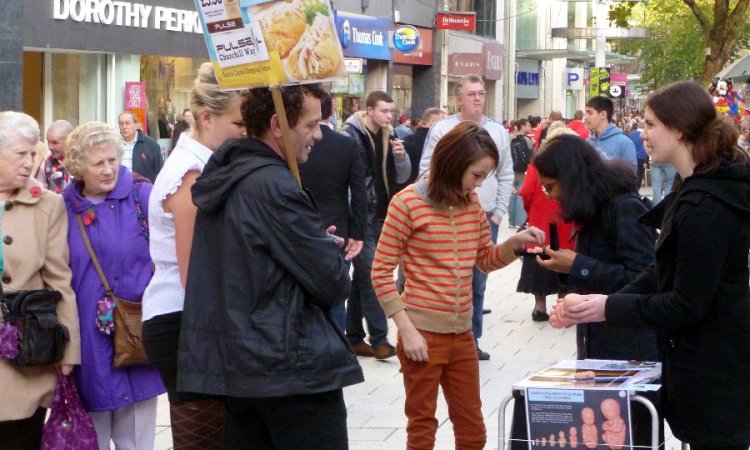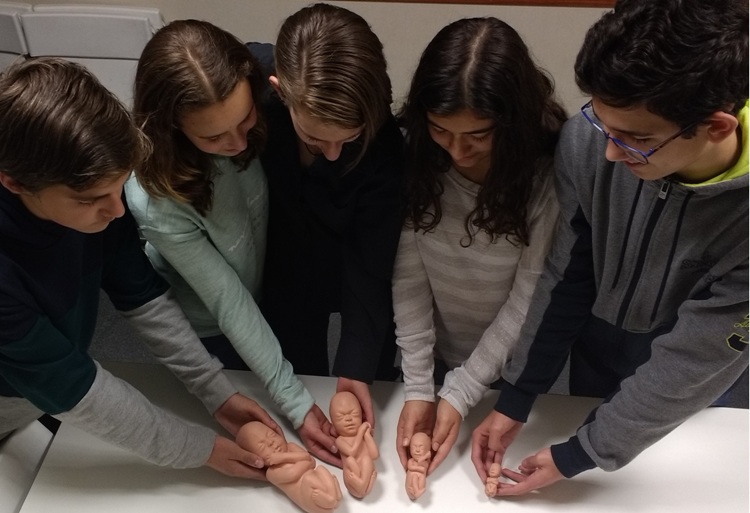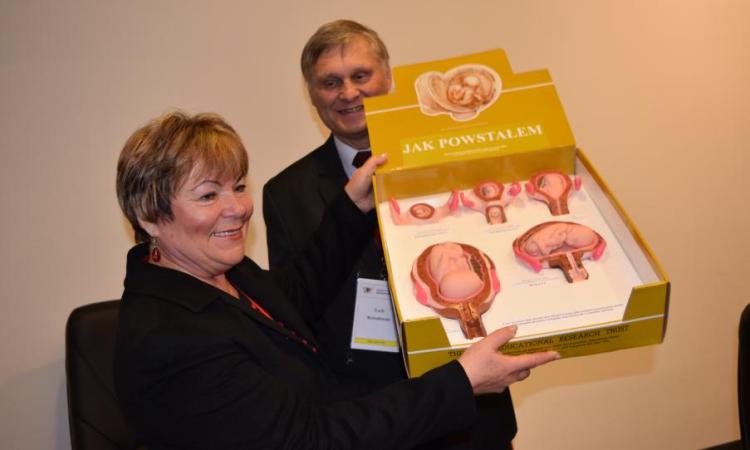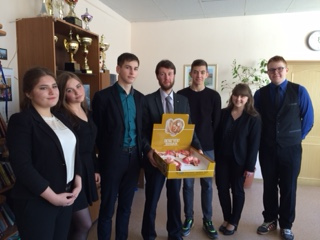The model answer to ending abortion
Posted by Alithea Williams on 27 February 2017
SPUC has sold thousands of these sets since they were developed in 1990.
Growing up in a pro-life home, I was always very aware of the facts of life in the womb. In fact, my parents, as erstwhile SPUC speakers, even had a set of foetal models, which a young me saw more in the way of dolls than scientific models. (I later donated these to my university pro-life group, but they were so disfigured with crayon that I doubt they used them much!)
It was at university that I realised that not everyone knew about what was obvious to me - the development of the baby in the womb. I remember my first year flatmate asking me about my precious feet badge, so I explained that they were the feet of a ten week old unborn baby. She responded "I didn't know they had feet at that stage". My experiences running various forms of pro-life outreach have brought home to me that many people really are just not aware of the basic facts of foetal development. The "clump of cells" argument may be a tired one from professional pro-abortion advocates, but if people really don't know what a ten week old baby looks like, they are vulnerable to this. The fact that people don't see the humanity of the child in the womb of course has great implications for the abortion debate.

University days doing pro-life outreach. Children are always fascinated by foetal models, and they're an invaluable educational resource.
This is why accurate foetal models are so important. Now that I work at SPUC, it's been fascinating to discover how people around the world have been using them to change hearts and minds. Since the SPUC Educational Research Trust developed the "How You Began" models in 1990, thousands of sets have been made and sold all over the world - from Canada to Australia, from Spain to Russia. The extremely realistic models were designed and manufactured under the expert guidance of a team of leading foetal authorities including obstetricians and gynaecologists, pathologists and other experts in anatomy and embryology. There are models of the unborn child at 4, 6, 10, 14 and 18 weeks, of which the three largest are life-size. (You can buy a set from the SPUC shop!)
Let me share some examples of where in the world the models have made their way recently...
Spain

Rocío, a medical student in Madrid, sent us this picture of a group of teenagers with the models. She also wrote to SPUC to thank us for the models, and to let us know how useful they have been. So far, Rocío and a group of helpers have organised talks in four locations, and have already reached 324 people! Most of these were teenagers, with some even younger children (10-12). With this age group, Rocío explained, they focused mainly on the value and beauty of life. On the reaction at these events, she said:
"Overall, the reactions have been very good. It has been an uplifting process. Most of our listeners have been participative and respectful...Most of our listeners touched the models and we could tell they were moved by them. Some people were so in awe that they were afraid to touch them. It has touched me personally seeing the look in people's faces as we told them the corresponding ages of the foetal models and how abortion was legal in our country at each of those moments. We have seen the great need there is in our area for solid pro-life education."
Poland

Our friends in Poland have even translated the title!
Russia

In the last few months, SPUC has sent "How you began" sets to four different locations in Russia. Our contact Alexey sent us this photo of it being used in a school.
Have you used foetal models elsewhere in the world? Comment and let us know your experiences!